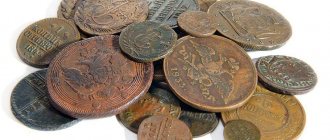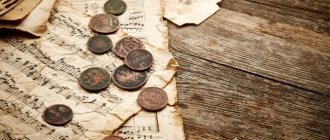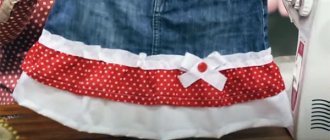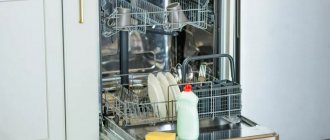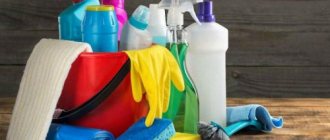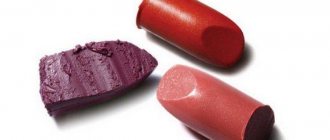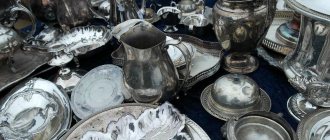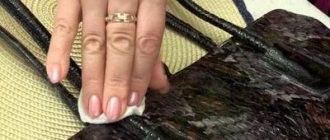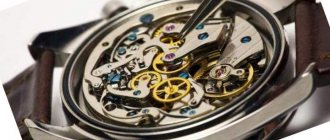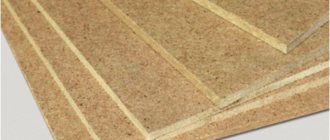Home page » Home and comfort » Cleaning
Author of the article
Svetlana Pavlikhina
Reading time: 6 minutes
AA
Numismatists treat their collections with trepidation and make sure that each piece is in perfect condition. Sometimes they wonder how to clean a silver coin at home without damaging it and reducing its value.
Cleaning can be done in a variety of ways, each with its own advantages and disadvantages.
Features of cleaning silver coins
Before you start cleaning, you need to carefully examine the coin to determine the degree of oxidation and contamination. If dirt must be cleaned, then in certain situations you don’t have to get rid of the oxide.
An antique coin gains special value thanks to its patina, but sometimes its appearance deteriorates significantly.
As a rule, if the oxide is uniform and the rust is not visible, then it is better not to clean it. If the old coin is covered with unsightly spots that hide the design, then they are removed.
Before cleaning, you need to at least approximately determine the price of the product.
When minting large coins, high-grade silver was most often used, and in the case of small coins, low-grade silver was used. Taking this nuance into account, various cleaning methods are used.
How not to clean silver coins
Not every composition is suitable for cleaning any silver, and if chosen incorrectly, it can damage the coin. Before using the product, you need to determine whether it is truly suitable for cleaning silver coins:
- Baking soda. It should not be used for cleaning, since, being an abrasive, it damages the surface, leaving a grid of tiny scratches on it, which can cause coins to lose part of their value. Expensive collectible items cannot be cleaned this way.
- Acids. They are dangerous for metals, including silver, since acid damages the patina; if it does not exist, then such compositions can be used for cleaning.
- Soap solution. Not aggressive or abrasive, it does not mechanically injure silver during cleaning, but it provokes the appearance of green oxides on it if the composition contains not only silver, but also copper.
When cleaning silver items, it is not recommended to use the following compounds:
- cleaning powders for plumbing - they are not only strong abrasives, but also have an overly aggressive effect and irreversibly damage the metal;
- Dishwashing detergents - such compositions are not able to cope with contamination, but can easily lead to the appearance of silver oxidation.
Methods for cleaning silver products are selected for each specific case, taking into account existing rules. Sometimes especially valuable silver coins are not cleaned at all, since even the slightest damage will immediately affect the price.
Cleaning Rules
To give coins a more attractive appearance, the procedure must be performed strictly according to the rules:
- First, surface contaminants are removed. To do this, use a soap solution and a soft toothbrush.
- Cleaning is carried out carefully, slowly, so as not to damage the surface.
- Once surface cleaning has been completed, a decision is made as to whether the patina needs to be removed.
- The product is cleaned with the selected product.
- Upon completion of the procedure, the coin is washed with warm water.
Cleansing rules
Before starting the process, it is necessary to remove dirt and dust from the surface of the coins, since any actions using cleaning agents will not have a positive effect if the product is dirty. Once the silver has oxidized, the patina does not need to be removed as it can indicate the age of the coin and increase its value.
Cleaning should be done very responsibly. Before you start treating coins with special solutions, you must perform the following steps:
- remove all dirt and dust from the surface using a soft and clean cloth, toothbrush or other brush with soft bristles;
- When the coin is cleaned of dirt, it must be rinsed and wiped dry.
When cleansing, there are rules, if not followed, the process will not bring a positive result. To remove contaminants, you must adhere to the following recommendations:
- movements must be careful and smooth so as not to damage the inscriptions applied to the surface of the product;
- It is prohibited to use hard brushes or abrasive materials;
- Coins should not be allowed to rub against each other.
The use of folk remedies for cleaning
Products can be cleaned using simple and affordable means. It is worth considering the most common of them.
Lemon acid
Often cleaning is done with citric acid. This tool can easily complete the task.
The procedure is performed according to the following scheme:
- Citric acid is added to water in a ratio of 3:1.
- Place silver in the solution and periodically turn the product over.
- Make sure that the coin is completely covered with liquid.
- Use a toothpick and cotton swabs to remove dirt and dust.
- When the dirt begins to peel off, the coin is taken out and wiped.
The main thing is to remember that you cannot leave silver in such a solution for a long time, otherwise the patina will be damaged and it will be problematic to restore it.
Ammonia
To clean the product, you can purchase regular ammonia at the pharmacy. Silver is briefly immersed in it, after which the surface is wiped with a cotton pad. Then you just need to wash the coin in running water and wipe dry.
Soda and foil
When using this method, the following actions are performed:
- Pour 0.5 tsp into the foil. soda
- Pour in about 1 tsp. water.
- Mix the ingredients to form a paste.
- Silver is placed on the resulting mass.
- The edges of the foil are wrapped to prevent the solution from spilling out.
Do not press or rub the coin, otherwise scratches will appear on the surface. If the coating is too thick, then the product is left in this condition overnight.
Soap solution
The product is considered gentle, capable of cleaning minor stains. It is used in primary metal processing. And use laundry or baby soap .
Procedure steps:
- The soap is ground on a grater.
- The resulting chips are diluted in water (the liquid should be warm).
- Place the contaminated item in the soapy solution.
- Leave it in the solution for about an hour.
- Wipe the surface and remove dirt with a toothbrush.
Toothpaste
It also turns out to be an effective remedy. In this case, a small amount of paste is squeezed directly onto the metal. After this, the surface is cleaned. Use a soft cloth or brush.
Vinegar
Vinegar also does the job well. A small piece of soft cloth is moistened in it. After this, wipe the surface until it begins to shine.
To ensure that this process takes a minimum of time, the vinegar is preheated a little.
Salt
The method is very common, but is only suitable for coins that are not of particular value.
When using it, just a few simple steps are performed:
- Salt is mixed with water in equal proportions.
- The resulting slurry is spread on foil.
- A silver object is placed on top and wrapped in foil.
- After a couple of hours, the product is removed and washed with water.
Process nuances
Before cleaning a coin, determine the current condition of the product and the approximate amount of contamination. The first stage of cleaning is the removal of soil residues and other easily disposable contaminants. Most of the numismatic items are covered with plaque. It is necessary to determine what exactly covers the surface of the product that is supposed to be cleaned.
If the coating is represented by patina, then there is no need to remove it; such a layer protects the object from corrosion and the influence of negative factors. It is necessary to clean silver of patina only if the product loses its appearance due to a thick layer of plaque and the design cannot actually be seen. In other versions, patina is one of the factors that increases the value of the product.
Before starting to clean a silver coin, experienced numismatists and jewelers recommend approximately determining the value of the item and the approximate fineness of the precious metal. In a number of options, it is possible to start from the size - the larger the object, the higher the standard. Previously, small coins were made with less precious metal content. This procedure will allow you to select the product that will cause the least damage to the product. However, there are also universal methods suitable for virtually all types of silver alloys.
Removal of specific contaminants
The choice of product largely depends on the type of contamination. The cleaning technology taking into account this nuance is slightly different.
Black
A mixture of soda and ammonia will help get rid of blackness. These components are mixed in equal proportions and applied to the surface of the product.
After this, it is wiped with a cloth and washed with water.
Greenery
A green tint indicates the presence of copper in the composition.
Regular ammonia will help remove greens: the product is immersed in it and left for about a quarter of an hour. This is quite enough to remove plaque.
Patina
To remove patina, a 5% formic acid solution is most often used. The liquid is poured into a glass container and the item that needs cleaning is immersed in it.
After 5-10 minutes, remove the silver and wipe with a soft cloth.
Rust
To remove rust, it is recommended to use hydrochloric acid. But it is impossible to buy it in its pure form, so household products containing this substance are used. They are diluted in water in a ratio of 1:10 and poured into porcelain dishes.
Money is immersed in the liquid and kept in it for no more than 20 minutes, taken out of the solution and cleaned.
Canning coins
After cleaning, silver is preserved. All cleaning residues are removed from the surface of the product. To preserve the specimen, it can be lubricated with a greasy product that prevents the rapid formation of oxide. Vaseline oil is often used in this capacity. The preserved coin is placed in a holder - a specialized storage bag. It is undesirable to allow tactile contact with the product in the future - this leads to the emergence of new contaminants.
Review of store products
There are several special products designed to clean silver:
- Silbo. Produced in Germany. Cleaning with it takes a maximum of 8 minutes. The coin is placed in a strainer and dipped into the solution, after which it is washed and dried. A protective film is formed on the surface to prevent corrosion.
- Leuchtturm. Removes oxides and dirt. The metal object is immersed in the solution for 5 minutes, and then washed and dried.
- Shine Coins. Used to remove black deposits, dirt and oxide. The surface of the object is wiped with a cloth soaked in the product for several seconds.
- Asidol-M. Used to remove grease, plaque and dirt. The solution is applied to the surface and after a minute wiped with a soft cloth.
Numismatist's commentary on cleaning ancient coins
Pertsev Artyom Leonidovich
Numismatist, author of the book “The World of Coins”
Ask a Question
It is not enough to simply clean a silver coin. It is important to ensure the safety of monetary units for a long time. To do this, you should perform the following steps: • upon completion of cleaning, the metal is washed well with water at room temperature and dried; • a small amount of paraffin is rubbed between the fingers. • Rub the coins with your fingers without applying strong pressure to the surface. • Make sure that the entire surface is evenly covered with the substance, without lumps.
What to choose: professional or folk remedies
Store-bought products can clean silver without harming it; you just need to strictly follow the instructions. It is impossible to guarantee the absence of damage when using improvised materials.
Professional solutions are expensive, so their use is not advisable when cleaning coins that are not of particular value.
The choice of option should be made taking into account what kind of money is being cleaned. For simple coins, folk remedies are perfect, and for expensive ones, special preparations are used.
Rules
To properly clean coins at home, you must comply with each of the safety standards and recommendations associated with a specific method. Otherwise, it is possible to damage the surface and reduce the value of the product. The main points that need to be followed when restoring the appearance characteristics of an object made of precious metal are the following nuances:
- Areas with dirt are initially treated with a solution of laundry soap. This solution is distributed over the surface of the product using a soft toothbrush.
- During all manipulations with an object, it is forbidden to make sudden movements and strive to complete the manipulations quickly - haste often leads to damage.
- It is not recommended to use abrasive compounds and materials on silver, as their effect is excessively aggressive.
- The specific option for cleaning a product from patina is determined only after all dirt has been removed from the silver surface.
- When using specialized cleaning solutions for precious metals, it is prohibited to allow several coins to come into contact with each other.
- Once cleaning is complete, rinse the coin under warm running water.
- It is prohibited to apply a sudden thermal effect to the item, as well as rinse it in ice water immediately after cleaning. This leads to degradation of the precious metal.
Attention!
When it is difficult to independently determine the estimated value and fineness of a silver coin, it is advisable for a beginner in cleaning to seek help from professionals. If you suspect that a product has a high cost, the best option is to seek the services of cleaning silver from plaque and other contaminants from professionals. This step will prevent possible damage to the item.
How to clean an old coin
To ensure that the collectible object does not lose its value, it cannot be cleaned until it shines, as this will negatively affect the preservation of the relief. Rough mechanical or chemical cleaning is also unacceptable. Since old coins can be very fragile, in most cases they are either not cleaned at all or are cleaned using special gentle products. It is also acceptable to use electrolysis.
Having studied various methods of cleaning coins and choosing the optimal one, you need to maintain the accuracy of each step.
Cleaning a coin is a delicate and responsible process for which you need to carefully prepare. However, if all the rules are followed, you can get a neat and restored collectible object.
Cleaning Rules
To ensure effective cleaning of silver coins at home, follow safety precautions. Otherwise, the surface may be damaged and the cost will be reduced.
- Before cleaning silver coins, remove any dirt, dust, or soil from the surface. Otherwise, all methods will not have the full effect.
- The whole process must occur smoothly, with great care so as not to harm the old metal.
- During the process, use a soft cloth, a clean cloth and a toothbrush or other lightweight brush.
- After any cleaning, rinse with water and wipe or dry to remove traces of water and moisture.
- Beware of sudden temperature changes; do not throw a hot coin into cold water and vice versa.
